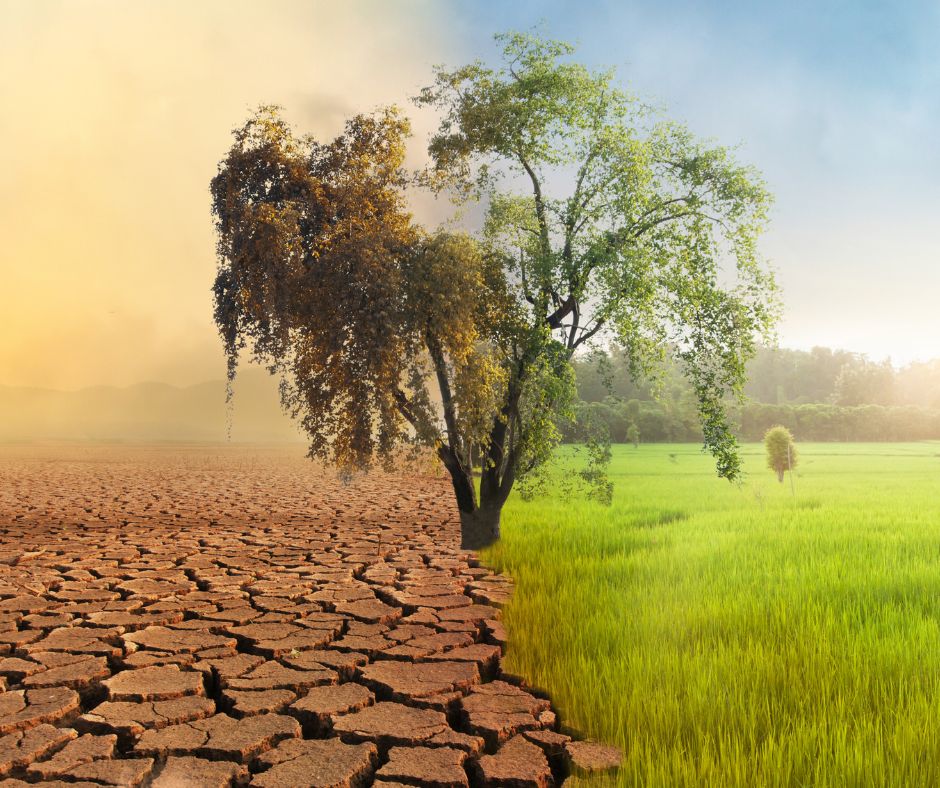During the federal election, we asked all candidates to respect and promote the UN Declaration on the Rights of Indigenous Peoples (UNDRIP). We received some questions, and we wanted to take this opportunity to explain why this is a fundamental part of climate action in Canada.
Thankfully, Terri-Lynn Williams-Davidson, Nigel Grenier, and Elizabeth Bulbrook of White Raven Law were willing to explain this important issue. Check out the Q&A below.
What is UNDRIP?
In 2007, the United Nations Declaration on the Rights of Indigenous Peoples (UNDRIP) was adopted by the General Assembly. This international law document affirms the rights of Indigenous Peoples, and falls within a category of international law called ‘soft law’ which is quasi-legal in nature and is not formally binding upon states. However, soft law is important, as it may be cited as evidence of international customary law and may be used by Canadian courts as an interpretive tool for contextualizing hard law in its analysis.
UNDRIP could become binding in Canada if it was ratified by legislation. Canada initially voted against UNDRIP at the General Assembly of the United Nations in 2007. Since 2010 the Canadian government has endorsed UNDRIP as an aspirational document to guide policy.
In 2016, Romeo Saganash of the New Democratic Party tabled a private member’s bill, C-262, which would have required the Government of Canada to take all measures necessary to ensure that the laws in Canada are in harmony with UNDRIP. But the bill was left to die following weeks of intense opposition from Conservatives in the Senate.
Why is UNDRIP important for Canada, and Indigenous Peoples in Canada?
UNDRIP is important because it establishes a universal framework of minimum standards for the survival, dignity and well-being of the Indigenous Peoples. It elaborates on existing human rights standards and fundamental freedoms as they apply to Indigenous Peoples. UNDRIP principles would ensure that Canada meets these minimum standards, and would provide a stronger degree of protection for Indigenous rights than those currently in place under Canadian law.
Implementing UNDRIP is an important step within the broader process of pursuing reconciliation between Indigenous Peoples and Canada. For example, for the Haida Nation, which is located on the Pacific Coast, UNDRIP is a useful tool in the pursuit of recognition of Haida sovereignty, jurisdiction, and rights.
Why is implementing UNDRIP an important part of taking action on climate change, and environmental protection more broadly?
UNDRIP affirms Indigenous Peoples’ rights to protection of the environment. It states that “Indigenous peoples have the right to the conservation and protection of the environment and the productive capacity of their lands or territories and resources.” Further, Article 25 states: “Indigenous peoples have the right to maintain and strengthen their distinctive spiritual relationship with their traditionally owned or otherwise occupied and used lands, territories, waters and coastal seas and other resources and to uphold their responsibilities to future generations in this regard.”
Indigenous Peoples play an important role in environmental management. For example, the Haida are bound to the land and sea through the reciprocal relationships reflected in Haida law. These relationships acknowledge the interconnectivity of human beings, the lands and waters of Haida Gwaii, plants, animals, and supernatural beings.
Yah’guudang is the Haida legal principle of respect for all living things. It celebrates the ways in which lives and spirits are intertwined and honours the responsibility that the Haida hold to the environment. The Haida have a responsibility to care for the land and manage it in a way that is sustainable for all future generations. In return, Haida Gwaii provides rich resources which enable the Haida people to thrive. UNDRIP affirms Indigenous Peoples’ role in environmental protection, and for the Haida, that role is grounded in Haida laws, values, and world view.
What do you see as the first solid step down the path towards fully implementing UNDRIP? What would change when Canada is really living up to its commitments?
Recognizing Aboriginal title held by Indigenous Peoples would be a start. This would shift the discourse away from proving Indigenous use and occupation of land, which is the current test, towards the more fruitful discussion of how Indigenous and non-Indigenous Peoples could co-exist as self-determining and sovereign entities with overlapping jurisdiction to lands and waters.
UNDRIP states that “Indigenous peoples have the rights to the lands, territories and resources which they have traditionally owned, occupied or otherwise used or acquired.”
Under domestic law, Aboriginal rights are enshrined in section 35 of Canada’s Constitution and, in theory extend to all Indigenous Peoples in Canada. However, in practice section 35 of the constitution only protects Aboriginal rights in generalized and abstract ways.
For Indigenous Nations to exercise these rights they must go to the courts to ‘prove’ the existence of specific rights, to articulate their nature, and to determine their scope. This presents an access to justice issue: Indigenous Peoples have constitutionally protected rights that they cannot exercise until they overcome the barriers presented by the court system. The litigation is very costly, and it can be challenging to assemble acceptable evidence.
Canadian courts have acknowledged the existence of Aboriginal title since the 1973 case of Calder v British Columbia, but yet only one Indigenous nation, the Tsilhqot’in, has successfully obtained a declaration of Aboriginal title. For Canada to fully implement UNDRIP, it would need to make significant acknowledgement of Aboriginal title.
Many of our supporters have likely heard about issues related to UNDRIP in the context of energy project approvals, like the Trans Mountain pipeline. Why is it important to consider Indigenous rights in approving new infrastructure?
UNDRIP is important because it provides a higher level of protection for Indigenous rights.
We need to consider UNDRIP in the context of Canadian Aboriginal law. Currently, under Canadian law, the Crown has a duty to consult Indigenous Peoples and accommodate their interests on projects which impact their Aboriginal rights. This duty exists on a spectrum – small projects require only notice, and large projects may require accommodation to minimize impacts. Where a Nation falls on this spectrum also requires an assessment of the strength of the Indigenous Nation’s case to establish rights and title.
However, for some nations, there are troubling limitations to the duty to consult and accommodate. Indigenous Peoples have a right to be heard by government and to participate in decision making under this framework but there is no requirement for consent, no matter how harmful the project may be. UNDRIP changes this legal landscape.
Under UNDRIP, there must be free, prior, and informed consent that goes beyond the current duty to consult and accommodate in the common law. Article 32.2 of UNDRIP states that, “States shall consult and cooperate in good faith with the indigenous peoples concerned through their own representative institutions in order to obtain their free and informed consent prior to the approval of any project affecting their lands …”
Implementing UNDRIP would require the state to acknowledge Indigenous governments as formal decision makers on equal footing with Canadian governments. This would require the establishment of co-management mechanisms with Indigenous and Canadian representatives. It would also require dispute resolution mechanisms when the co-management body is unable to reach consensus between the Indigenous and non-Indigenous decision makers.
The Haida Nation established the legal duty to consult and accommodate in the Haida Nation v. British Columbia (Minister of Forests) case in 2004. The Federal Court of Appeal relied extensively on the Haida case to overturn the Enbridge Northern Gateway Pipelines Project.
In the Haida case, the court affirmed that the Haida Nation had a strong prima facie case, and that the Crown had a duty to accommodate the Haida Nation’s rights and title. As a result, the Haida have established co-management regimes to the lands and waters of Haida Gwaii.
It is important to consider Indigenous rights when approving new infrastructure because of the long term impacts that these project have upon Indigenous Peoples. The Haida have a saying that “the world is as sharp as the edge of a knife.” One of the layers of meaning contained within this teaching is that our ecosystems exist in a delicate balance. Even a single project can upset that balance and have disastrous and long lasting consequences, especially when set against accumulative impacts to the environment.
It is also important to consider Indigenous rights because it is the just thing to do. Before we can achieve reconciliation between Indigenous Peoples and the Crown, we must first reconfigure the legal landscape to address the imbalances in decision making that privileges others over Indigenous Peoples.
How can our supporters who are not Indigenous help further the goals of UNDRIP and act in solidarity with Indigenous Peoples? Where should people go to learn more?
One does not need to be Indigenous to stand for Indigenous rights for they are human rights. Further, one does not need to be Indigenous to stand in solidarity with Indigenous Peoples.
There is no single way to be an ally to Indigenous Peoples. As a process, being an ally includes reflecting upon one’s positionality within colonialism, meaning the power relationship between Indigenous Peoples and non-Indigenous Peoples. It involves cultivating respectful relationships with Indigenous Peoples and communities, especially the Indigenous nation upon whose land one lives. It includes deep listening to the concerns of Indigenous Peoples and learning about their perspectives, which are grounded in distinct cultures and histories. Respectful advocacy by non-Indigenous Peoples involves supporting the agency of Indigenous Peoples and enhancing their voices, rather than speaking over them.
Terri-Lynn Willams-Davidson is a citizen of the Haida Nation and also its General Counsel. She has represented the Haida Nation at all levels of court, including the Supreme Court of Canada and is lead counsel for the Haida Nation’s aboriginal title case, as well as the related reconciliation negotiations – which have resulted in innovative agreements with British Columbia and Canada. Terri-Lynn was the founding Executive Director of the charity EAGLE (Environmental-Aboriginal Guardianship through Law and Education), and has served as a juror for the Ecotrust (US) Buffet Award for Indigenous Leadership, board member of the Haida Gwaii Singers Society and a partner with Raven Calling Productions. In 2014 she was honoured with the Andrew Thompson Award for environmental advocacy.
Elizabeth Bulbrook is an Associate at White Raven Law. She brings extensive professional experience working with indigenous peoples to her position. Prior to studying law, Elizabeth received a Master’s degree in Archaeology and worked as an archaeological consultant for the Haida Heritage and Forest Guardians to protect and document archaeological sites on Haida Gwaii.
Nigel Grenier is an Articled Student at White Raven Law. Nigel worked as a temporary articled student for the Indigenous Community Legal Clinic, which provides legal to marginalized people in Vancouver’s Downtown Eastside. Nigel chose to study law to revitalize Indigenous laws which are grounded in oral histories and traditions. Indigenous laws contain rich normative resources that are relevant today and robustly inform the rights and obligations of the contemporary world.







